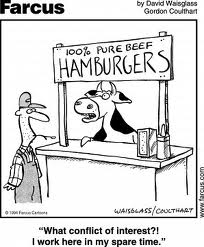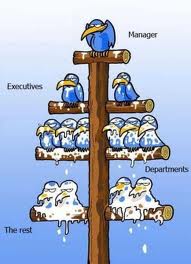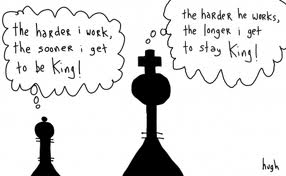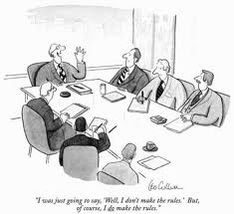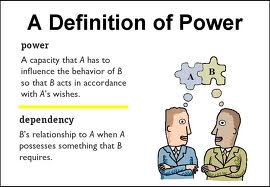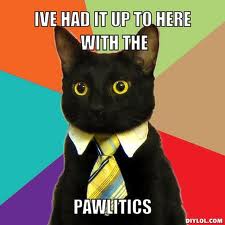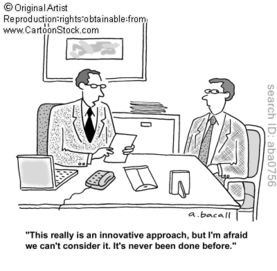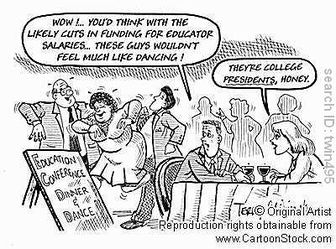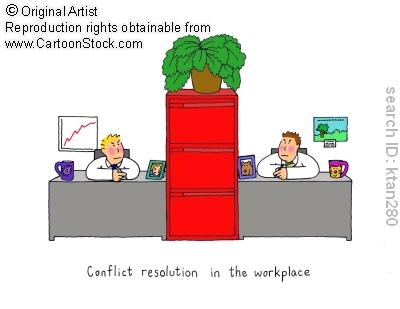Class Session 5
| Organizations as Political SystemsSuzie Armstrong Terry Fassanella Madeline Goldman John Hall Terry Hinders Marcia Strange ---- ---- |
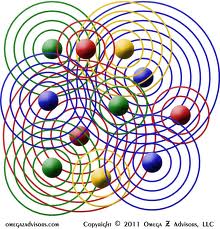 !! !!
|
Topic Overview:
This week’s readings focused on Organizations as Political Systems. Couched in this political framework are various layers. The layers discussed are centered on interests, conflict, and power. Often these components revolve around decision-making involving allocation of scarce resources. As a result, coalitions and alliances of groups with similar interests form to negotiate and bargain for these scarce resources. In turn, conflict arises between groups with varying interests. Moreover, Morgan asserts that while workplace conflict can promote competition and collaboration, it can also disrupt office productivity with personality clashes.
Amid the readings by Cohen & March, and Morgan, there are multiple sources of power, many of which are rooted in control. This control includes finances, technology, rewards, and information. According to Clark, sagas are an everyday occurrence in the workplace, and to some extent, each work environment is defined by how these sagas enhance or diminish our work life. Although somewhat predictable, Bolman and Deal’s advice on positioning is quite relevant in politics and working through the stages of conflict. As a result from the assigned readings, a better understanding of the political systems framework is gleaned and the ability to more effectively lead an office or program within an organization is acquired.
| Terminology ---- |
| Autocracy: absolute government where power is held by an individual or small groups and supported by control of critical resources, property or ownership rights, tradition, charisma, and other claims to personal privilegeBureaucracy: rule exercised through use of the written word, which provides the basis for a rational-legal type of authority, or “rule of law”Technocracy: rule exercised through us of knowledge, expert power, and the ability to solve relevant problemsCodetermination: the form of rule where opposing parties combine in the joint management of mutual interests, as in coalition government or corporatism, each party drawing on a specific power baseRepresentative democracy: rule exercised through the election of officers mandated to act on behalf of the electorate and who hold office for a specified time period or so long as they command the support of the electorate, as in parliamentary government and forms of worker control and shareholder control in industryDirect democracy: the system where everyone has an equal right to rule and is involved in all decision making, as in many communal organizations such as cooperatives and kibbutzim. It encourages self-organization as a key mode of organizing.Overbound system: power is highly concentrated. Everything is tightly regulated.Underbound system: power is diffuse. The system is loosely controlled.Tautology: Also known as "rhetoric". The process of using different words to say the same thing, even if the repetition does not provide clarity. |
Summary of Class Readings
| Bolman & Deal: Chapter 9 Power, Conflict & CoalitionPolitical Assumptions (pp. 194-195) * Coalition members have differences in values, information, information, and perceptions of reality. * Most important decisions involve allocating scarce resources. * Scare resources and differences in values put conflict in center of day-to day dynamics. * Goals and decision making emerge from bargaining and negotiating among stakeholders jockeying for their own interests. * Organizations are coalitions of individuals and interest groups. Implications of Political Propositions (p. 196)* Differences and scarce resources make power a key resource. * Power is the ability to make something happen. Organizations as Coalitions (p. 198)* Cyert and March (1963) – Differences btwn structural and political views of goals. * Confusion over wage payments (“costs”) and dividend payments (“profit.”) * Makes slightly more sense to say that the goal of a business enterprise is to maximize profit than to say to say its goal is to maximize the salary of the janitor. Relational Conceptions (p. 200)Cyert and March (1963): Relational Concepts – rules to make decisions manageable.1) Quasi-resolution of conflict: Instead of solving conflict, the problem is broken up into smaller pieces for different units. Decisions never consistent, and only need to be good enough to keep the coalition functioning.2) Uncertainty avoidance: Orgs use a range of simplifying mechanisms (SOPs and traditions that enables them to act as if the environment is clearer than it is.3) Problemistic search: Organizations look for solutions near the presenting problem and grab the first acceptable solution.4) Organizational learning: Over time, organizations evolve their goals, altering what they attend to and what they ignore.Power and Decision Making (p. 201)* Alliances form b/c members have common interests. Can do more together than apart. * Human Resource theorists: Less emphasis on power and more on empowerment. - Power typically viewed as negative. In reality power produces results. Authorities and Partisans (p. 201)* Participation, openness, and collaboration substitute for power. * Gamson (1968) – Relationship btwn antagonists – partisans and authorities. * By virtue of their position, authorities are entitled to make decisions on their subordinates. * Authorities are the recipients or targets of influence, and agents of social control. (Ex: Parents function as authorities, children as partisans. Parents make decisions, but children try to influence the decision makers.) Sources of Power (Baldridge, 1971; French & Raven 1959, Pfeffer, 1981) (p. 203)* Position Power (authority): Positions confer levels of legitimate authority. * Control of Rewards: Ability to deliver jobs, money and rewards brings power. * Coercive: Rests in the ability to constrain, block, interfere or punish. * Information & expertise: Power flows to those with the info and know how. * Reputation: builds on expertise. Track records based on prior performance. * Personal Power: Attractive and social adept b/c of charisma, energy and vision. * Alliances/Networks: Getting things done involves working in complex groups. * Access & Control of agendas: By-product of alliances/networks is making agendas. * Framing: Elites can convince others to support things not in their best interest. Distribution of Power - Alderfer (1979) and Brown (1983)(p.205)* Overbound: Power is highly concentrated, everything is tightly regulated. * Underbound: Power is diffuse and the system is loosely controlled. Conflict in Organizations (p.206)* Combination of scares resources + divergent interests conflict. * Conflict is not always a problem or sign that something is amiss. * The management challenge is to recognize and manage interface conflict. VIDEO: What sources of power and implications of decision-making are seen in this clip from the movie Crimson Tide? Also consider the politics of leadership at play here. (Note: some Not Safe For Work language) media type'''"youtube" key'''"Q1sLU6HOxyI" height'''"315" width'''"560" | | ---- . . . . . ---- ---- . . . . . . . . . . ---- . | |
| ''(p. 202-206) * Organizational politics has become a taboo subject, due to the ideal that the goals of the organization should take priority over personal objectives. However, a political analysis is critical to our understanding of the key sources of power within an organization. It helps us understand why organizations do not always behave as rational, functionally integrated systems. It can explain how employees are motivated by proximity or access to power. It also allows us to examine the role that organizations play in the larger society. * However, use of the political metaphor exclusively can lead to the tendency to view an organization very cynically, assuming hidden political agendas everywhere. In addition, it may overstate the power of individuals at lower levels of an organization and understate the significance of those who hold the ultimate decision making authority for setting its course. VIDEO: Igor Popovich, Director of the Career Professional Australia organization, offers some advice on "How to Get What You Want" with power in negotiation. Think about the various sources of power that he discusses in negotiation settings. Also, admire his shiny vest and his reaction when his phone rings at the 4-minute mark. He seems like an interesting fellow. media type'''"youtube" key'''"T6k-6GxriiE" height'''"315" width'''"420" | |
---- . . . . . . . . . . . . . . . . . . . . . . . ---- . ---- . . . . . . . . . . . . . . . . . . . . . . . . . . . . . . ---- Significant Sources of Organizational Power * Formal authority * Control of scarce resources * Use of organizational structure, rule, and regulations * Control of decision process * Control of knowledge and information * Control of boundaries * Ability to cope with uncertainty * Control of technology * Interpersonal alliances, networks, and control of “informal organization” * Control of counterorganizations * Symbolism and the management of meaning * Gender and the management of gender relations * Structural factors that define the stage of action * The power one already has ---- . . . . . . . . . . . . . . . . . . . . . . . . ---- ---- . . . . . . . . . . . . . . . . . . . . . . . ---- |
| Cohen & March - Leadership in an Organized Anarchy: The term “anarchy” conjures images of society running amok- making its own rules without any governmental control. In this reading, Cohen & March describe the four ways in which college presidents must deal with the “organized anarchy” typical in a modern-day university. They identify four fundamental ambiguities of the presidency - the ambiguity of purpose, the ambiguity of power, the ambiguity of experience, and the ambiguity of success. They describe how leadership methods are challenged by these ambiguities, and provide suggestions and tactics for response at each level.* The Ambiguity of Purpose: What are the goals of a university? Does anyone really know? Do they care? A typical college president is faced with ever-changing priorities and goals and “lives within a normative context that presumes purpose within an organizational context that denies it” (pg. 17). There is no typical “model” or correct purpose which is shared by everyone within an organization, and while mission statements and goals are important and useful as a guide, “they accept the presumption that intelligent leadership presupposes the rational pursuit of goals.” (pg. 17) * The Ambiguity of Power: Who has the “real” power on a typical college campus? A college president can play the ambiguity card here because in many instances, the position reports to numerous entities - the community, the faculty, the trustees, the students, the parents, and governmental leaders. It can be easy to “shift the blame” in times of famine, and take responsibility for achievements in times of feast. A good president will recognize this confusion of presidential limits on power, and not make goals or promises that are unrealistic to achieve. * The Ambiguity of Experience: “Experience enables you to recognize a mistake when you make it again” (Jones, F.P.) While we all attempt to learn from our own experiences and mistakes, Cohen & March offer a simple learning paradigm for the college president: # The president is presented with list of actionable items and alternatives. # The president chooses one of the alternatives. # The president observes & assesses the outcome. # The president repeats the behavior that works, and changes the behavior if not. Like a child who is burned by a flame, some lessons are not learned until they are experienced fully. But sometimes, experience is not the best teacher, and a president would be wise to consider the advice of a predecessor, so as not to dive into the deep end of a pool if he doesn’t know how to swim. College presidents may also have a false impression of their ability to make sound decisions because of the “yes” mentality in his presence. * The Ambiguity of Success: It always seems as though there is another “rung” on the ladder, but for the college president, “There’s nowhere to go but DOWN from here”. Once an educational administrator reaches the top of the academic ladder as a college president, it is rare that the position is a stepping stone to the presidency at another, more elite, university. Advanced age may dictate the next level of advancement. In addition, it is hard to measure success at the presidential level, as there are so many competing factors that affect the climate of a university. As with the ambiguity of power, many measurable milestones are out of the control of one person. Success or failure can be attributed to a college president regardless of the strength of his contribution. Cohen & March suggest that a college president “find pleasure in the process of presidential life...(and) seek reminders of his relevance and success.” (pg. 20) Leader Response to Anarchy: According to Cohen & March, the key to dealing with the ambiguities of this position listed above is a sense of humility. A president’s reputation will likely be defined by “broad social events or by the unpredictable vicissitudes of official responsibility than by his actions.” (pg. 21) “A college president is, on the whole, better advised to think of himself as trying to do good than as trying to satisfy a political or bureaucratic audience; better advised to define his role in terms of the modest part he can play in making the college slightly better in the long run than in terms of satisfying current residents or solving current problems...(they) occupy a minor part in the lives of a small number of people. They have some power, but little magic.” (pg. 21). The Elementary Tactics of Administrative Action: How does a leader with a purpose operate within an organization absent of purpose? Cohen & March describe 5 major properties of decision making to get things accomplished within an organized anarchy: Understand that the actual issue being presented usually isn’t about the content, it’s about the personal feelings and attitudes of those affected by the outcome. # Red-tape. If it takes to long to coordinate the effort to solve a particular problem, it probably won’t happen, however, once started - it is difficult to stop. # “Any decision can become a garbage can for almost any problem.” Timing is everything. # System overload is common, and when this occurs, it is unlikely that a decision will be reached through a formal process. # Weak institutional memory can reek havoc on the best laid plans. If events and decisions are not properly recorded, one can easily repeat avoidable mistakes. In order to influence the course of decision making, Cohen & March suggest the following tactical rules: # Spend time - if you have a problem that needs to be addressed, be prepared to be part of the solution. Do your homework and attend committee meetings so that you are present when important issues are presented. # Persist- “it is a mistake to assume that today’s victory will be implemented automatically tomorrow.” (pg. 23) # Exchange Status for Substance- Self-importance should be left at the door. Although college presidents receive and are denied credit for things they have little control over, they should do the same for others, and allow others to savor some of the victories. # Facilitate Opposition Participation- Allow those around you to help with decision making, and encourage them to come up with alternate solutions rather than just what you want to hear. # Overload the System - Don’t fall into the trap of committing all of your energies and resources into any one project. Decision making in “energy poor” organizations is often left to the people who initiated the project, or the administrators who have the power and the money to make a decision. # Provide “Garbage Cans” - This is reminiscent of a government bill that is filled with “extras” just to get it passed. Again, timing is everything - figure out where the proposal needs to be on the agenda for a favorable decision. # Manage Unobtrusively - “a central tactic in high inertia systems is to use high-leverage minor actions to produce major effects.” (pg. 26) No one will notice.... # Interpret History - Consider the consequences of past decision making. Some strategies for recording events to evade the legitimacy of the actual discussion are included, but not necessarily agreed with by the summary writer! The Technology of Foolishness: An organization is often defined by its purpose, and in this section we learn about the ways in which some college presidents confront these ambiguities by defining a set of objectives, often basing decisions on gut instinct or through tradition (that’s the way we’ve always done it), rather than on reason. Thinking should precede action - not the reverse. The Problem of Goals: Within the three classic justifications for goal setting, college presidents tend to set “good (read: not necessarily realistic) goals” rather than make “good decisions”. (pg. 30) Cohen & March recommend that we look at our choices realistically, like children. Children know what they want, and repeat the behaviors that work in order to get what they want. They set a goal, and continue to pursue different behaviors - perhaps developing more interesting “wants” until they find the behavior that works - regardless of the consequences. They develop their values based on experience. For college presidents, it is essential to first figure out the values, then act. (pg. 31). Summary writer’s side note: Former W & M President Gene Nichols, might have done better had he followed this advice. Although, in some organizations, it is better to act before thinking; as it is may be easier to ask for forgiveness than permission. President’s and Foolishness: “There is little magic in the world, and foolishness in people and organizations is one of the many things that fail to produce miracles...”(pg. 35) Those of you who were around when President Gene Nichol was fired/resigned for the cross controversy will notice a theme within these readings. The power struggle that ensued between the President, Students, Board of Visitors, Faculty, and the Community clearly proved that the power is not all in the President’s hands. File:Https://lh4.googleusercontent.com/unz8rVseAlHke9RMokOntlGI-VHr0cKA85-8sL6jte3V8zrcB6GJhsEXjB5e9tVMPjy9tR6THB-wlrBoiCiOI3yWvzP1o1xdQL1wo0MCiuahzNM83w 405x33px | Read the story here! |
| Clark, B. R. - The Organizational Saga In Higher Education:* An organizational saga is a collective understanding of unique accomplishments in a formally established group. * Organizational saga refers to a unified set of publicly expressed beliefs about the formal group that is (a) rooted in history (b) claims unique accomplishment and (c) is held with sentiment by the group. * The story helps rationalize for the individual his commitment of time and energy for years, perhaps for a lifetime, to a particular enterprise. * Organizational sagas show high durability when built slowly in structures social context. * When the saga is firmly developed, it is embodied in many components of the organization, affecting the definition and performance of the organization and finding protection in the webbing of the institutional parts. * Two stages can be distinguished in the development of an organization, initiation and fulfillment. * The saga is initially a strong purpose, conceived and enunciates by a single man or small cadre whose first task is to find a setting that is open to a special effort. Reed College started this way with nonconformity as its principle. * Initiation can also come for an established organization in a crisis of decay. This was the case at Antioch College, reformed by a new president that radically transformed the college. * Initiation can also occur in organizations ready for evolutionary change. This is true for Swarthmore College * Fulfillment centers on personnel, the program, the external social base, the student subculture and the imagery of the saga. * When senior faculty are devoted to a new idea, a saga is probable. Such faculty cadres were developed at all three colleges. * The program becomes a set of communal symbols and rituals invested with meaning. Swarthmore had special seminars and other practices in the honors program. Antioch had a work study program, GERs, community government and community involvement. Reed had special freshmen lecture and seminar courses, junior qualifying examination. * The saga also becomes fixed in the minds of outside believers devoted to the organization usually the alumni. * Liberal alumni seek to conserve what they believe to be a unique liberal institution and protect it from conservative forces of society that might change it. * The student body is the third group of believers. To remain a saga a change must be supported by the student subculture. This was true at all 3 colleges. * The saga is more widely expressed as a generalized tradition in statues and ceremonies, written histories and current catalogs. * An organizational saga is a powerful means of unity in an organization. |
| 2/23/12 Class Notes The Political Frame was the focus of class this week, with a Powerpoint presentation given as an overview to begin the evening. Initial discussion was centered on the sources of power that various organizational members held within groups. An interesting point was brought up about the influence of secretaries and administrative staff who can sometimes act as gatekeepers to valued information. From these groups came a discussion on coalitions and the sources of power within them as derived from the Morgan article. Among the 14 that Morgan listed, the class focused on the control of technology as a very important component in this day and age. Pam stressed the point of considering our own sources of power that we possess in our toolbox. The conversation turned to conflict within these coalitions, including ways to stimulate (holding back information, overcommunicating) and reduce conflict (avoidance, compromise). An interesting point was brought up about the creation of a meeting agenda, where calls for conflicts are set at the end, when co-workers are likely to be tired and ready for the meeting to end, making it less likely they raise conflicts. Also, we learned that Pam does not like to be patted on the head. After a good laugh, the discussion shifted to several definitions and theories of power and control. Resource allocation (control is with those who manage the resources), modernist (power is through coercion), cybernetic (managing the differences in performance between individual and the organization, agency (managers will act in the best interest of owners), and Market/Bureaucracy (achieve cooperation among individuals). This part of the conservation wrapped up with some interesting points on gender and organizations. Pam noted the discrepancies between male/females in higher education roles, especially that of President and professor. We also covered Carla Costello’s research on sticky floors, or why some staff cannot escape junior roles, and Kelly Ward and Lisa Wolf Wendell’s research on extending the clock on tenure track to allow for maternity leave. We wrapped up with the point that organizational structures and ideologies were often male-gendered, which could carry implications for power. After an exercise that brought our case-study teams together to ponder the organizational saga that was at play in our case, the class watched a clip from the movie Apollo 13. The clip acted to demonstrate the political frame on display during the mission crisis. We could see the frame through the various interest groups within the mission negotiating and bargaining for the scare resources and information that was available. The class took note of the different groups and subgroups that were depicted in the scene from the mission commander to the engineers and managers of the mission components. A significant point was made here about the importance of dress in determining your role. The commander was wearing a vest, the only one to do so, the managers were all in white shirts and black ties, and the engineers were dressed down even more. The classification of job responsibilities as denoted by dress sparked a good conversation. Finally, we discussed the various sources of power that were evident in the clip, from information (which one manager knew, giving him power to control the decision making) to the personal and symbolic power of the commander (as he drew the image on the board and used an authoritative voice to gather recommendations). The class session wrapped up with a role-playing exercise to demonstrate the planning of a dual enrollment policy with four groups acting as a K-12 administrator, K-12 teacher, college administrator, and college faculty. The groups would represent their various interest groups and consider what issues and policies would pertain to their cause. Within each interest group, the members reflected on sources of conflict and issues of decision-making within the group. From that, the class split into 6 subgroups that would be comprised of one member from every interest group. Even though class time was running short, it was clear to see the conflict of interests that was arising as the different interest groups came together to form a policy where each side had their own idea and desires for success. This was a really nice exercise to demonstrate the issues of conflict and power within interest groups and then show the difficulty in forming policy when multiple interest groups come together. VIDEO: Learning how to resolve conflict in the workplace. From a ninja. Quite funny, but also listen for the pros and cons of conflict in organizations and see how they match up with the suggestions offered in class. media type'''"youtube" key'''"nVupFiks9Y0" height'''"315" width="560" |
"Yeah, I haven't seen this movie either." -- Mike Mullin "Whaaaaaaat?!" -- The entire class "Okay, we've really got to take Mike out!" -- Pam |
| Legitimate Power in a Mediated Age.pdf]This article describes how men and women differ with how they obtain and use power. Men use harder, more forceful tactics while women use softer, more relational tactics. Regardless of gender, the symbol of vision and the creation of strong relationships with followers will transform both leaders and followers.| Leader's use of Influence Tactics.pdfKouzes, J.M. & Posner, B.Z. (2002). The leadership challenge (4th ed.). San Francisco: Jossey-Bass.Kouzes and Posner are an essential source in expanding the field of leadership. The Leadership Challenge has been referred to as a leader’s comprehensive field guide. Within the text, they walk leaders through the process of how to gain influence from establishing credibility, modeling, and inspiring others. Whereas in section four of the text, they encourage leaders to challenge the process through searching for opportunities whereby they seize the initiative, exercise outsight, and take action. Additionally they spur leaders to challenge the process through experiment and taking risks by generating small wins and learning from experience. This often results in some degree of conflict and it is the leader's responsibility to aid their constituents to develop hardiness which address control, commitment, and attitude.Maxwell, J.C. (2005). The 360-degree leader: Developing your influence from anywhere in the organization. Tennessee: Thomas Nelson, Inc.As a leader, it is critical to determine the optimal place to lead from within the organization. In John Maxwell’s book, The 360 – Degree Leader, he reveals 99% of all leadership within most organizations occurs in the middle. It is from this place where a leader can practice, exercise, and extend influence. Within the text, Maxwell journey’s the reader through exploring the myths of influence, potential, and control. He then leads the reader through the principles of leading up (to the boss), leading across (to peers), and leading down (to those you supervise).Ward, K. & Wolf-Wendle, L. (2006). Faculty Work and Family Life: Policy Perspectives from Different Institutional Types. Virginia: Stylus Publishing.As mentioned in class, this work looks at the gender issue in higher education faculty work-life balance issues. Ward and Wolf-Wendle raise interesting points concerning the beginning of the tenure track clock and maternity leave, as well as various policies that relate to this idea at different institutions. This is an important consideration as we as future leaders argue and plot policies at our various institutions.aFU8KAU8uHkC&pgPA51&lpgPA51&dqfaculty+work+and+family+life+kelly+ward&sourcebl&ots0bh-cn35w1&sig0WL3SfVAEzlILhBtvTGceXvwE4k&hlen&saX&eiSWNKT5ScHaf9sQLu2_3qCA&ved0CFUQ6AEwBw#vonepage&qfaculty%20work%20and%20family%20life%20kelly%20ward&ffalse | Faculty Work and Family Life (Google Books)An self-assessment of the influence and power you already have can be helpful as you work to promote change within your organization. For a sociological model for evaluating your current and potential sources of power, see this article by Drs. William Smith and Elizabeth Davis: [[1]] |
| ''Food for Thought:= To wrap this up, we would like to offer one good take-away from the class conversation that we should all keep with us as future leaders and directors: When applying this frame to higher education, it is critical to remember location (rural/urban), size (small, medium, large), and organizational culture is incredibly important when considering the power, interests, politics, and conflict within an office, program, department, or institution. |

